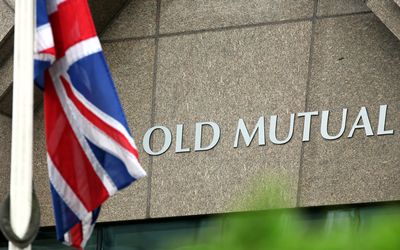An Old Mutual break-up will not help the remaining units perform any better
by Chris Hughes,
2016-03-07 17:15:32.0
OLD Mutual should be wary of the market cheer that greeted reports the company would split itself up.
Shares in the Anglo-South African insurer rallied as much as 12% on Monday after Sky News reported the company was considering the sale of its sizable wealth management business, a move that could help cut the conglomerate discount afflicting the stock.
The risk is that Old Mutual forgets that not only does it need to a deal, it also needs to get a good price.
It’s not hard to see why CEO Bruce Hemphill, who arrived in November, would consider a break-up. Most of Old Mutual’s earnings are exposed to the weakening rand, and the stock is down 15% over the past year. Shareholders want decisive action from the new broom.
Old Mutual has already been overhauled once following the financial crisis, leaving it with four main assets — a largely South African financial services provider, a wealth unit mostly focused on the UK, and stakes in a fund manager and Nedbank. There are no compellingsynergies from owning all four businesses.
The companyis worth 206.8 pence a share, or £10.1bn, on a sum-of-the-parts basis, say analysts at Bank of America Merrill Lynch. It was trading 13% below that level before news of the possible break-up emerged.
The shares would clearly enjoy some re-rating if the UK wealth business were sold, as the remaining assets would attract new investors focused purely on emerging markets.
Old Mutual’s emerging markets operation is currently valued at an implied 0.65 times embedded value, the insurance standard measure of net worth. Its peer group trades at between 0.8 and 1.1 times, according to UBS research. The unit might attract interest from a bidder — especially now that some of Barclays’s African assets are up for sale.
The snag is that a break up will not help the remaining businesses perform any better. Nor would it create a gain for shareholders, unless the assets are sold off at a premium. Yet the opportunity to remove a conglomerate discount may tempt the group to accept less than the very best price for the UK business.
These are prized assets: St James’s Place, the industry darling, trades at almost 25 times forward earnings. Old Mutual Wealth could fetch about 20 times the same measure, according to analysts at Bernstein. That’s about £4.5bn, or nearly half of Old Mutual’s current market value.
If the insurer can get an auction going and achieve a decent premium, that would be a result for shareholders. But Old Mutual would be wise to keep the option of an initial public offering up its sleeve if it could not.
*This column does not necessarily reflect the opinion of Bloomberg LP and its owners.
Bloomberg

Old Mutual. Picture: BLOOMBERG/SIMON DAWSON
OLD Mutual should be wary of the market cheer that greeted reports the company would split itself up.
Shares in the Anglo-South African insurer rallied as much as 12% on Monday after Sky News reported the company was considering the sale of its sizable wealth management business, a move that could help cut the conglomerate discount afflicting the stock.
The risk is that Old Mutual forgets that not only does it need to a deal, it also needs to get a good price.
It’s not hard to see why CEO Bruce Hemphill, who arrived in November, would consider a break-up. Most of Old Mutual’s earnings are exposed to the weakening rand, and the stock is down 15% over the past year. Shareholders want decisive action from the new broom.
Old Mutual has already been overhauled once following the financial crisis, leaving it with four main assets — a largely South African financial services provider, a wealth unit mostly focused on the UK, and stakes in a fund manager and Nedbank. There are no compellingsynergies from owning all four businesses.
The companyis worth 206.8 pence a share, or £10.1bn, on a sum-of-the-parts basis, say analysts at Bank of America Merrill Lynch. It was trading 13% below that level before news of the possible break-up emerged.
The shares would clearly enjoy some re-rating if the UK wealth business were sold, as the remaining assets would attract new investors focused purely on emerging markets.
Old Mutual’s emerging markets operation is currently valued at an implied 0.65 times embedded value, the insurance standard measure of net worth. Its peer group trades at between 0.8 and 1.1 times, according to UBS research. The unit might attract interest from a bidder — especially now that some of Barclays’s African assets are up for sale.
The snag is that a break up will not help the remaining businesses perform any better. Nor would it create a gain for shareholders, unless the assets are sold off at a premium. Yet the opportunity to remove a conglomerate discount may tempt the group to accept less than the very best price for the UK business.
These are prized assets: St James’s Place, the industry darling, trades at almost 25 times forward earnings. Old Mutual Wealth could fetch about 20 times the same measure, according to analysts at Bernstein. That’s about £4.5bn, or nearly half of Old Mutual’s current market value.
If the insurer can get an auction going and achieve a decent premium, that would be a result for shareholders. But Old Mutual would be wise to keep the option of an initial public offering up its sleeve if it could not.
*This column does not necessarily reflect the opinion of Bloomberg LP and its owners.
Bloomberg
























Change: -0.47%
Change: -0.57%
Change: -1.76%
Change: -0.34%
Change: 0.02%
Data supplied by Profile Data
Change: -1.49%
Change: 0.08%
Change: -0.47%
Change: 0.00%
Change: -0.04%
Data supplied by Profile Data
Change: -0.34%
Change: 0.03%
Change: -0.10%
Change: -0.22%
Change: -0.81%
Data supplied by Profile Data
Change: -0.28%
Change: -1.15%
Change: -0.07%
Change: -1.21%
Change: -0.22%
Data supplied by Profile Data